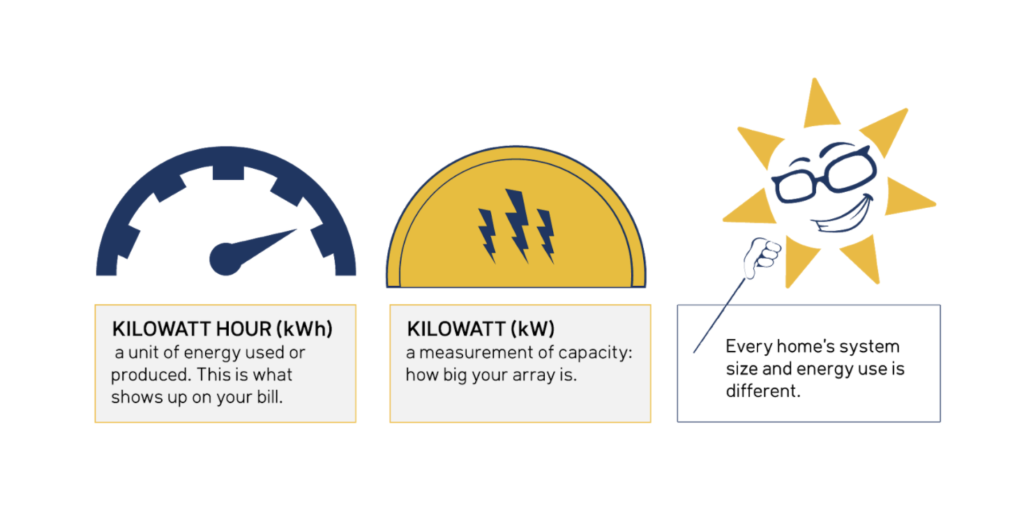When you start researching solar panels for your home or business you start seeing kW and kWh everywhere, but what do they mean?!?!
The Kilowatt (kW)
Power is measured in watts, and kilo means a thousand. So a kilowatt is 1000 watts. For example, let’s say you have a 60 watt incandescent lightbulb, it takes 60 watts or 0.06 kW to turn that lightbulb on. An LED light bulb on the other hand can be as bright as a standard incandescent light bulb, but can be powered at about 8.5 watts or 0.0085 kW. That is why LED light bulbs are preferred over incandescent light bulbs.
Now when we talk about solar modules, we describe power output under standard conditions. Standard conditions are 77F (25℃) and have 1 kW of solar energy per square meter shining on the panel. For example, a 350 watt solar panel under standard conditions will generate 350 watts (0.35kW) of power. If we connect 10 of these panels together we get 3.5 kW, for the total system size.
Now the question is how much energy will it actually produce?
The Kilowatt Hour (kWh)
Energy is measured in kilowatt hours. A kilowatt hour is how much power is used or produced within an hour. So, if an appliance uses 1kW of power in an hour to operate, then its energy usage is 1kWh. This term accounts for time, and illustrates how much power is or isn’t used from one hour to the next. Just like the speed of a car going 25 miles per hour, in one hour, the car travels 25 miles.
Let’s say a home has an average-sized solar array of 7.7 kW. Because we are not in standard lab conditions, the real world production from a solar array will vary. Cloudy days will produce less kWhs than sunny days, because the amount of energy per hour of sunlight reaching the panels will be less. Weather patterns, temperature fluctuations, roof angle, the array direction, and shading influence solar production.Our StraightUp Solar Project Developers factor this information to estimate how much your array will produce per year in kWhs. You can learn more about how we determine how many panels your home needs here. In the Midwest, a 7.7 kW array typically produces around 11,000 kWhs, which can offset an average home’s electrical usage.
Understanding these concepts can help you make more informed decisions when it comes to going solar. If you would like a free solar layout for your home or business in Missouri or Illinois, fill out the form below. We will give you an idea of how much power you will need for an array (kW), to produce the amount of energy (kWh) that you want to offset.
















